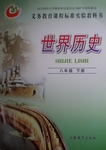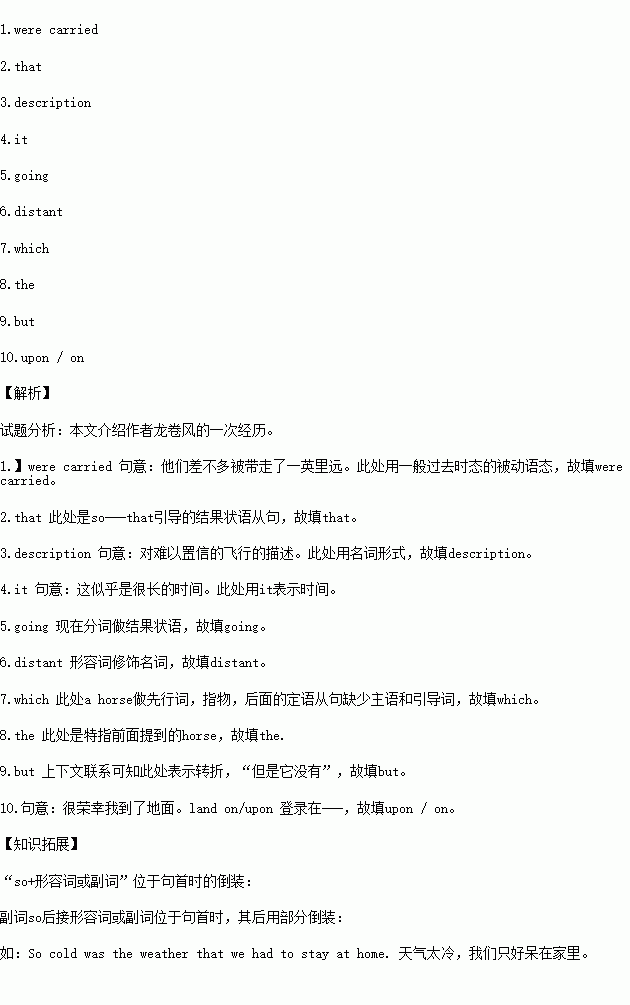题目内容
阅读下面材料,在空白处填入适当的内容(1个单词)或括号内单词的正确形式。
During an 1899 F4 tornado (龙卷风) in Missouri, three people, Miss Moorehouse, Mrs. Webster, and her son were caught up in the storm. They 1. (carry) nearly one mile, but were let down so gently 2. none of the three was seriously injured. Here is Moorehouse’s 3. (describe)of her unbelievable flight.
‘‘I was conscious all the time when I was flying through the air, and 4. seemed a long time. I seemed to be lifted up, 5. (go) up to a great height. At one time I was far above the church towers, and seemed to be carried to a 6. (distance) place. As I was going through the air, I saw a horse, 7. was a white one and had a harness (马具) on, floating about with me. By the way 8. horse kicked and struggled as it was thrown about, I knew it was alive. I was afraid that it would knock into me, 9. it did not. Finally, I was mercifully landed 10. the ground unharmed, saved by luck.”
 探究与巩固河南科学技术出版社系列答案
探究与巩固河南科学技术出版社系列答案

 e oil paint and our carpet . It worked perfectly .
e oil paint and our carpet . It worked perfectly . can conclude from the passage that____________.
can conclude from the passage that____________. he author was not satisfied with his family life
he author was not satisfied with his family life